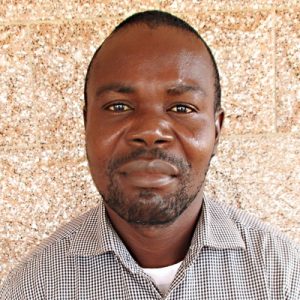The majority of the people here earn their livelihood through trading. They retail commonly used cosmetics and Chinese electrical items, to name but a few. There are also some self-employed vocational tradesmen and a few government employees. Most of the young men here are masons and some are carpenters. The young ladies are mostly engaged in street hawking because they have no interest in learning a trade. So, the proceeds from these different activities are used to support their families.
There are different groups of people in this community. But what is common here is that all groups wake up very early in the morning. They also need water to do some cleaning and bathing before they leave for their respective destinations.
"To be honest with you my brother, our primary drawback in this community is the water shortage," said Zainab Kanu.
People here fetch water from a community well and sometimes will use the borehole located at Bethel Primary School. The school becomes the only water source during the months of March and April each year when the water table drops and the community well goes dry. This places a lot of pressure on the well that is primarily meant for the school.
It adds stress on the community members because the school borehole is heavily regulated and the added congestion makes the process of fetching water take a lot of time. Packaged water is stocked in shops in this very community, but is very expensive to acquire.
"What I have observed over the years is that I suffer persistent headache whenever I go long hours without water. So, water is good medicine for me," said Fatmata Dumbuya.
Those who cannot endure the stringent control at the school have the tendency to use contaminated sources, such as nearby open swamps. The result of using bad sources is cholera and diarrhea and a heavy mosquito presence in the community. That is why the leading causes of death here are related to waterborne diseases and malaria.
Aminata Lane is very close to the business district of Lungi. So there is some decent hygiene and sanitation here, especially with the presence of sanitary officers who make visits to this community.
Most of the homes here have latrines made of mud bricks and a cement floor. And people have tried to ensure cleanliness in the latrines. They also have handwashing facilities, but water shortage is impacting the level of sanitation in the homes and latrines.
Here’s what we’re going to do about it:
Well Rehabilitation
The well marked for this overhaul is dry for part of the year and needs major work to supply adequate, clean water to the community year round. The pump will be removed, and a hand auger will be lowered inside and powered by a drill team. This hand auger will allow the team to drill several meters deeper to hit a sufficient water column that will ensure the well supplies water throughout all seasons.
As the team drills, casing will be installed, transforming the bottom of this hand-dug well into a borehole. PVC piping will connect this lower system directly to the pump, a construction that we know will also improve the quality of water.
Once this plan is implemented, everyone within the community will have access to safe drinking water in both quality and quantity, even through the dry months.
Hygiene and Sanitation Training
There will be hygiene and sanitation training sessions offered for three days in a row.
No handwashing stations were observed here. After our visit, the hygiene and sanitation trainer decided it would be best to teach community members how to build a tippy tap (a hand-washing station built with a jerrycan, string, and sticks). They will use these tippy taps for handwashing demonstrations, and will also teach about other tools like dish racks and the importance of properly penning in animals.
These trainings will also strengthen the water user committee that manages and maintains this well. They enforce proper behavior and report to us whenever they need our help solving a serious problem, like a pump breakdown.

 Borehole Well and Hand Pump
Borehole Well and Hand Pump






























